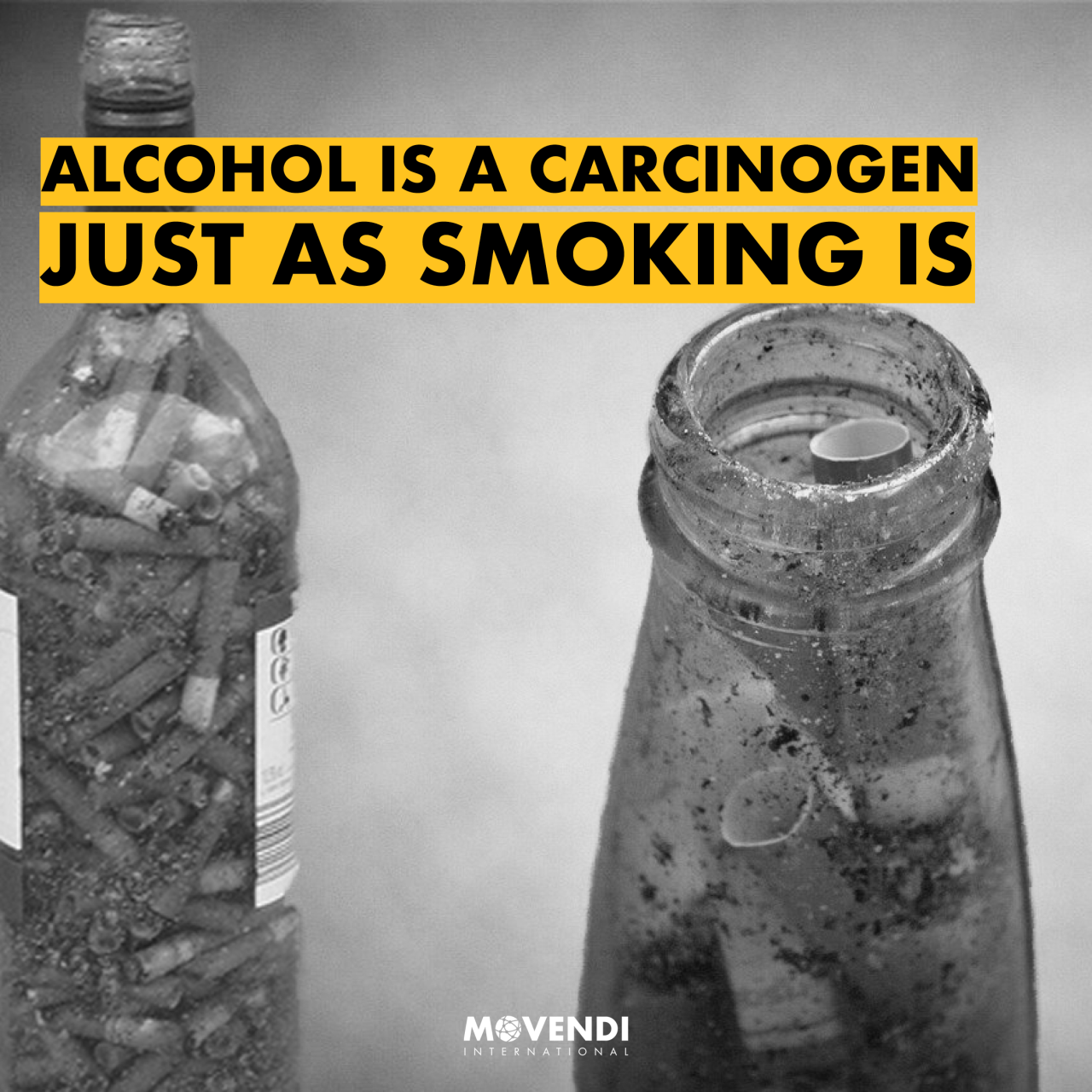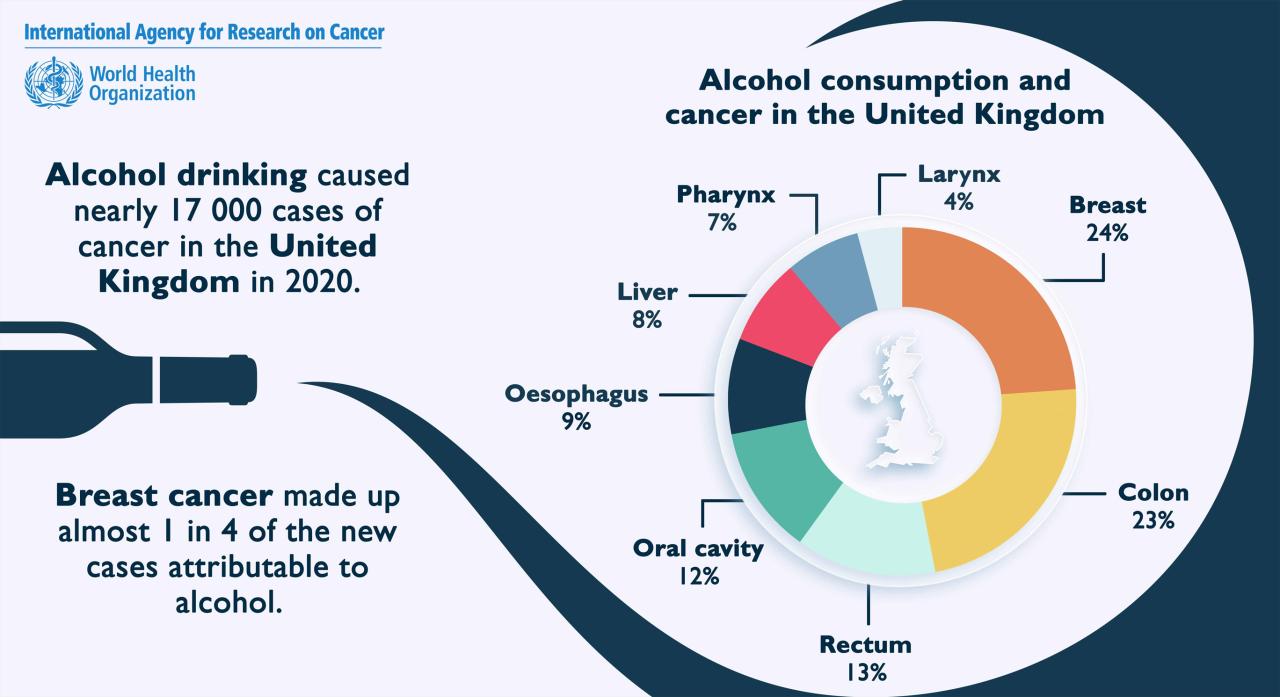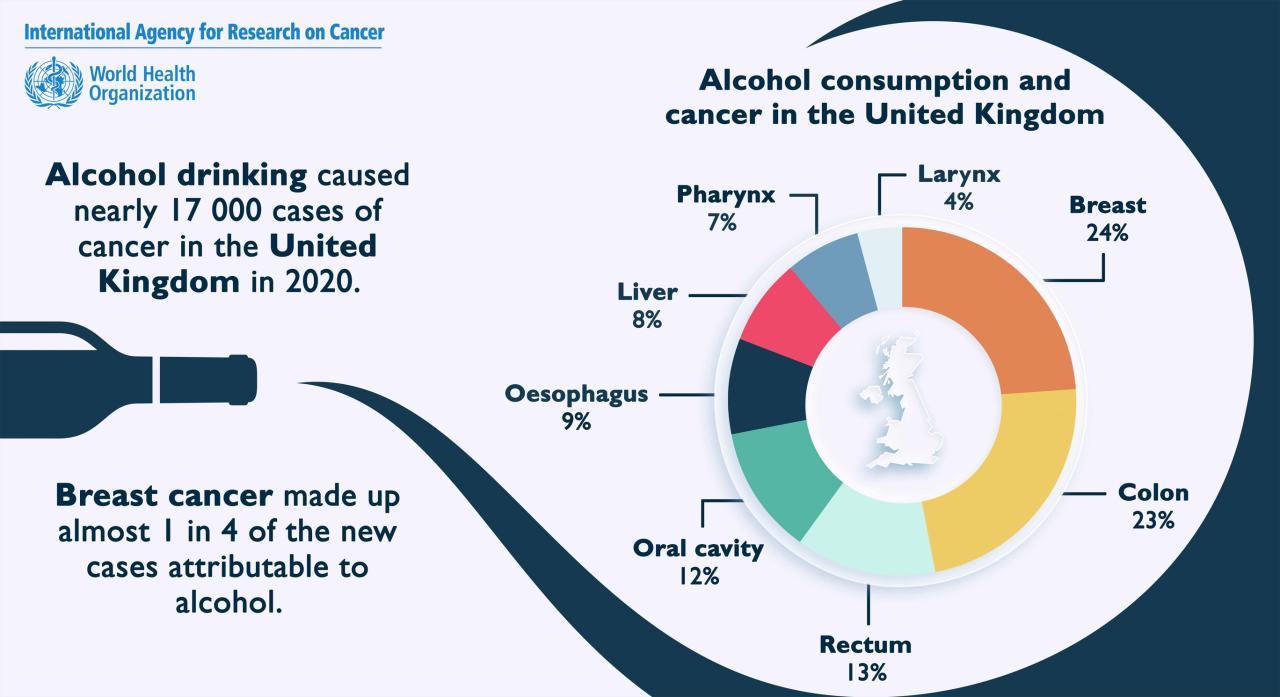Putting a cancer warning on alcohol is overdue, doctors say, and the debate is heating up. For years, the link between alcohol consumption and various cancers has been established, yet clear warnings on bottles remain scarce. This oversight has significant public health implications, considering the staggering number of cancer cases directly linked to alcohol use. We’ll explore the scientific evidence, ethical considerations, industry responses, and international perspectives surrounding this critical issue, examining why a simple warning label might be the overdue intervention we need.
This discussion will delve into the compelling statistics showing the correlation between alcohol intake and cancer risk, detailing the economic burden of alcohol-related cancers and the effectiveness (or lack thereof) of current public health campaigns. We’ll also analyze the potential legal and ethical hurdles to implementing mandatory warnings, considering industry pushback and public opinion. Finally, we’ll look at international best practices and explore creative visual representations to effectively communicate the dangers of alcohol consumption.
The Public Health Crisis of Alcohol-Related Cancers
The overwhelming scientific evidence linking alcohol consumption to various cancers necessitates a strong public health response. Ignoring this link is irresponsible and puts countless lives at risk. This article examines the public health impact of alcohol consumption, ethical and legal considerations of warning labels, industry responses, international perspectives, and visual representations to illustrate the urgent need for clear and prominent cancer warnings on alcoholic beverages.
Public Health Impact of Alcohol Consumption
Alcohol consumption is a significant and preventable risk factor for several types of cancer. The World Health Organization (WHO) estimates that alcohol is a major cause of several cancers, including liver, breast, colorectal, and head and neck cancers. The relationship between alcohol intake and cancer risk is dose-dependent, meaning the higher the consumption, the greater the risk.
Seriously, putting a cancer warning on alcohol? It’s about time, doctors are saying. Meanwhile, look up – you might miss something amazing! Check out this incredible celestial show, Venus Moon duo and Quadrantids meteors stun stargazers , before getting back to the important issue of clearer alcohol warnings to protect public health.
Studies consistently show a strong correlation between alcohol consumption and increased cancer incidence rates. For instance, the American Cancer Society provides statistics highlighting the significant number of cancer cases attributable to alcohol use each year. Beyond cancer, long-term alcohol abuse leads to liver cirrhosis, heart disease, neurological disorders, and various other debilitating conditions, impacting quality of life and lifespan.
The economic burden associated with alcohol-related cancers is substantial, placing a strain on healthcare systems worldwide. This burden encompasses treatment costs, lost productivity due to illness and premature death, and the societal costs associated with caring for individuals affected by alcohol-related diseases.
| Alcohol Consumption (Drinks per week) | Relative Risk of Breast Cancer | Relative Risk of Liver Cancer | Relative Risk of Colorectal Cancer |
|---|---|---|---|
| 0 | 1.0 | 1.0 | 1.0 |
| 1-7 | 1.2 | 1.5 | 1.1 |
| 8-14 | 1.5 | 2.5 | 1.3 |
| 15+ | 2.0 | 4.0 | 1.7 |
Note: These are illustrative figures and the actual relative risks can vary based on factors such as age, gender, and genetics. Consult reliable sources for precise data.
Ethical and Legal Considerations of Warning Labels

The effectiveness of warning labels hinges on their design and placement. Clear, concise language, impactful visuals, and prominent placement are crucial for effective communication. Successful public health campaigns, such as those related to smoking, demonstrate the power of well-designed warning labels in modifying behavior. However, mandating cancer warnings on alcoholic beverages could face legal challenges from the alcohol industry, citing issues such as freedom of speech and potential economic impact.
The ethical considerations involve balancing public health concerns with the interests of the alcohol industry. Government regulation in this area raises questions about the extent to which the state can intervene in personal choices while protecting public health. A sample warning label could incorporate a stark image, a concise message (“Alcohol causes cancer”), and information about available resources for support and cessation.
Industry Response and Public Opinion
The potential economic impact of cancer warnings on the alcohol industry is a major point of contention. The industry may argue that such warnings would negatively affect sales and profitability. However, the counterargument emphasizes the long-term benefits of reducing alcohol-related harm, which would ultimately outweigh any short-term economic losses. Past industry responses to similar public health initiatives, such as smoking regulations, often include lobbying efforts and campaigns to downplay the risks.
Public opinion is likely to be divided, with some individuals supporting the warnings while others express concern about government overreach or potential negative impacts on the industry.
- Reduced consumer demand
- Increased production costs (to accommodate new labeling)
- Negative publicity and damage to brand image
- Legal challenges and potential fines
- Loss of market share to competitors
International Perspectives and Best Practices

Different countries have adopted varying approaches to alcohol warning labels, reflecting diverse cultural contexts and regulatory frameworks. Some countries have implemented comprehensive warning label requirements, while others have adopted less stringent measures or none at all. Countries with successful models for reducing alcohol-related harm often employ a multi-pronged approach, combining warning labels with other measures such as taxation, advertising restrictions, and public awareness campaigns.
International collaborations through organizations like the WHO play a vital role in sharing best practices and promoting evidence-based alcohol control policies.
Visual Representation of Cancer Risks, Putting a cancer warning on alcohol is overdue, doctors say

A warning label could feature a dark, muted background with a stark, red graphic of a cancerous cell growing rapidly, contrasted with a healthy cell. The red symbolizes danger and the rapid growth visually represents the aggressive nature of cancer. The juxtaposition of healthy and cancerous cells emphasizes the harmful effects of alcohol on the body.
An alternative visual could depict a series of healthy liver cells gradually degrading and being replaced by scar tissue as alcohol consumption increases. The healthy cells could be vibrant green, slowly transitioning to a dull, brown color to symbolize the damaging effects of alcohol. This visual representation would emphasize the cellular level impact of alcohol abuse.
Doctors are right; putting cancer warnings on alcohol is long overdue. We need to be more aware of the health risks, just like we need to focus on other important things, such as checking out the game analysis for the exciting match – Milan 2-1 Juventus (Jan 3, 2025) Game Analysis – ESPN – before getting back to the serious business of public health awareness.
Ultimately, clear warnings about alcohol-related cancers could save lives.
Last Word: Putting A Cancer Warning On Alcohol Is Overdue, Doctors Say
The evidence is clear: alcohol significantly increases cancer risk. While the alcohol industry may raise concerns about economic impact, the potential to save lives through clearer warnings far outweighs these concerns. Implementing mandatory cancer warnings on alcoholic beverages isn’t just a matter of public health; it’s a moral imperative. By learning from international best practices and designing effective visual communication, we can empower consumers to make informed choices and reduce the devastating toll of alcohol-related cancers.
So, doctors are pushing for cancer warnings on alcohol – it’s about time, right? Maybe a trip to Paris could help take your mind off things; check out this amazing deal – Eurostar launches flash sale with discounted train tickets to Paris – before you make any decisions about your drinking habits. Seriously though, those warnings are important for public health.
The time for action is now.
FAQ Guide
What types of cancer are linked to alcohol consumption?
Alcohol is linked to several cancers, including mouth, throat, liver, breast, and colorectal cancers.
How much alcohol is considered “safe”?
There’s no truly “safe” level of alcohol consumption when it comes to cancer risk. The less you drink, the lower your risk.
Are there other health risks associated with alcohol besides cancer?
Yes, excessive alcohol consumption can lead to liver disease, heart problems, mental health issues, and more.
What are some examples of successful warning label campaigns for other products?
Cigarette warning labels are a prime example, significantly impacting smoking rates in many countries.
